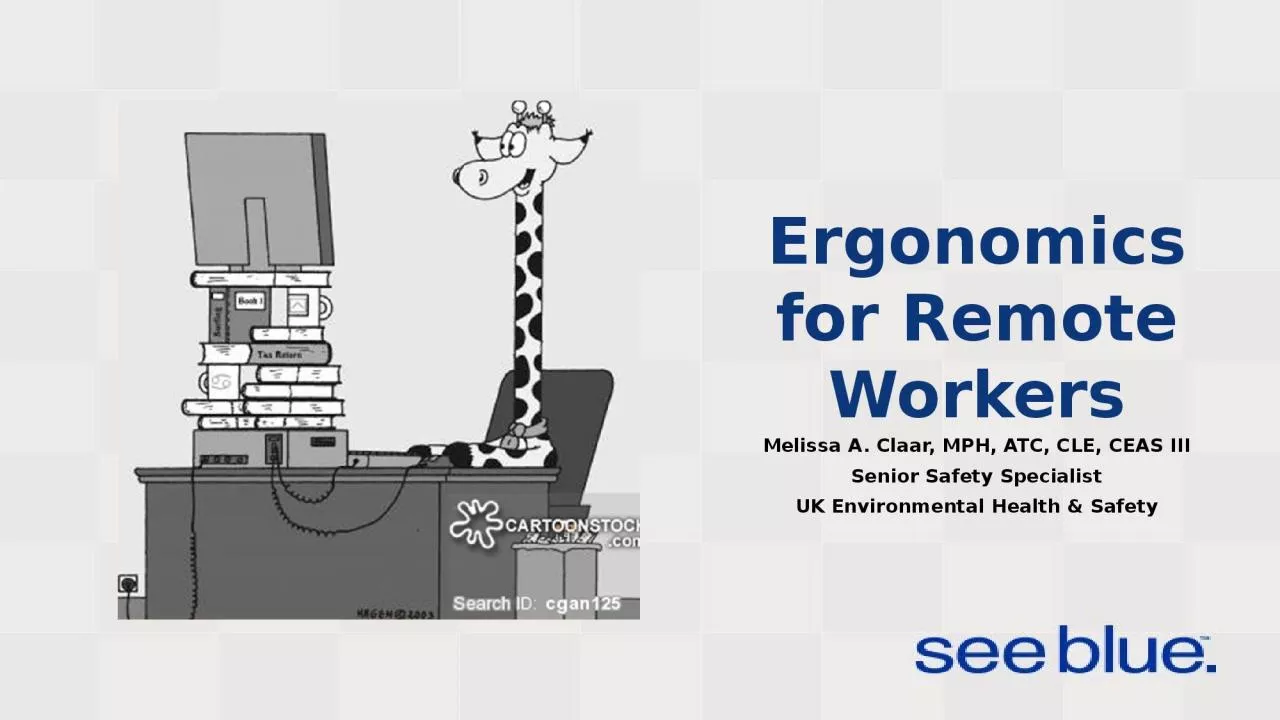PPT-Ergonomics for Remote Workers
Author : udeline | Published Date : 2023-06-24
Melissa A Claar MPH ATC CLE CEAS III Senior Safety Specialist UK Environmental Health amp Safety Ergo What Ergonomics is the study of the relationship between people
Presentation Embed Code
Download Presentation
Download Presentation The PPT/PDF document "Ergonomics for Remote Workers" is the property of its rightful owner. Permission is granted to download and print the materials on this website for personal, non-commercial use only, and to display it on your personal computer provided you do not modify the materials and that you retain all copyright notices contained in the materials. By downloading content from our website, you accept the terms of this agreement.
Ergonomics for Remote Workers: Transcript
Download Rules Of Document
"Ergonomics for Remote Workers"The content belongs to its owner. You may download and print it for personal use, without modification, and keep all copyright notices. By downloading, you agree to these terms.
Related Documents














